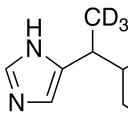Huangkui capsule attenuates renal fibrosis in diabetic nephropathy rats through regulating oxidative stress and p38MAPK/Akt pathways, compared to α-lipoic acid.
Klíčová slova
Abstraktní
BACKGROUND
In traditional Chinese medicine (TCM), Abelmoschus manihot (L.) medic (AM) is a natural medicinal plant used for the treatment of inflammatory diseases. Recently, Huangkui capsule (HKC), a Chinese patent medicine extracted from AM, has been widely applied to the clinical therapy of renal fibrosis in patients with early diabetic nephropathy (DN). However, the therapeutic mechanisms involved in vivo remain ambiguous. The goal of this study is to expound the mechanism in vivo of HKC in order to deepen the understanding of its clinical effects, by using the approaches of contrasting the dose-effects of HKC on oxidative stress (OS) in the kidney compared to α-lipoic acid (LA), and then demonstrating whether and how anti-oxidative properties of HKC or LA might be beneficial for the treatment of renal fibrosis in vivo.
METHODS
Thirty-three rats were divided into 5 groups, a Sham group, a Vehicle group, a L-HKC group, a H-HKC group and a LA group. The different doses of HKC, LA and distilled water were daily administrated for 8 weeks after the induction of DN by the unilateral nephrectomy combined with streptozotocin (STZ) intraperitoneal injections. Rat's general status, biochemical parameters, renal histological changes and OS indicators, as well as the key protein expressions in p38 mitogen-activated protein kinase (p38MAPK)/serine-threonine kinase (Akt) signaling pathways and downstream cytokines including transforming growth factor (TGF)-β1 and tumor necrosis factor (TNF)-α were examined, respectively.
RESULTS
HKC and LA ameliorated body weight, kidney weight, urinary albumin and renal function including blood urea nitrogen and serum uric acid, attenuated renal fibrosis including the cell numbers and extracellular matrix rate in glomerulus, and controlled OS indicators including malondialdehyde, total superoxide dismutase, 8-hydroxy-2'-deoxyguanosine and nicotinamide adenine dinucleotide phosphate oxidase 4, but did not lower blood glucose in DN model rats. Among them, the anti-renal fibrosis effect of H-HKC was better than that of LA. In addition, HKC simultaneously down-regulated the protein expressions of phosphorylated p38MAPK, phosphorylated Akt (p-Akt), TGF-β1 and TNF-α in the kidney of DN model rats, unlike HKC, LA only down-regulated p-Akt and TNF-α protein expressions.
CONCLUSIONS
We have demonstrated that HKC, similar to LA, is renoprotective via attenuating OS and renal fibrosis in the DN rat model. The potential mechanisms by which HKC and LA exert their therapeutic effects in vivo are respectively through down-regulating the activation of p38MAPK and/or Akt pathways as well as the expressions of TGF-β1 and/or TNF-α in the kidney. Our findings thus provide the useful information about a clinical combination of HKC and LA in early DN patients.





